Pruning basil is a straightforward and effective technique that can significantly boost the productivity and overall health of your basil plants. Top to bottom trimming is a commonly used method for pruning basil, which involves removing the top growth to encourage branching and a bushier appearance. Below we will learn about the five essential tips to master the art of pruning basil and maximize your plant’s leaf production.
Basil is a versatile herb that is widely used in cooking and for its aromatic properties. Whether you grow basil in your garden or in pots indoors, pruning is an essential task to encourage healthy growth and increase overall production.
Pruning basil not only helps to maintain the shape and appearance of the plant but also stimulates the growth of fresh leaves. We will discuss five tips for top to bottom trimming of basil plants to ensure a bountiful harvest. By following these techniques, you can enjoy a steady supply of fresh basil throughout the season. So let’s dive in and learn how to prune basil effectively!
Why Pruning Basil Is Important
Pruning is an essential practice for any basil grower who wants to increase production and enjoy a bountiful harvest. By trimming your basil plants, you not only promote bushier and more compact growth, but you also enhance the overall health of the plant.
In this section, we will explore the key reasons why pruning basil is important and how it can benefit your herb garden.
Promotes Bushier And More Compact Growth
- Pruning basil encourages the plant to grow more side branches, resulting in a bushier and fuller appearance.
- By regularly pinching back the top of the plant, you can prevent it from becoming too leggy and ensure a more compact growth habit.
- Bushier basil plants have a higher leaf density, allowing for increased leaf production and a higher yield.
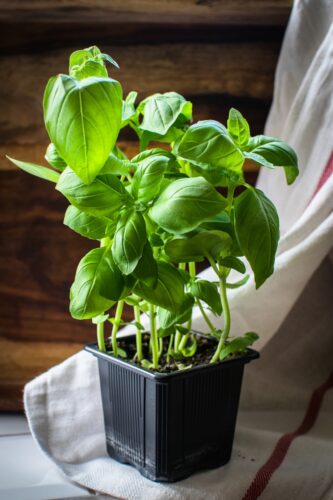
Increases Air Circulation And Reduces Disease Risk
- Overcrowded basil plants can easily become a breeding ground for diseases and pests.
- Pruning helps to improve air circulation within the plant’s canopy, reducing humidity and preventing the build-up of moisture.
- Adequate airflow reduces the risk of diseases such as powdery mildew and downy mildew, which can hinder the growth and productivity of your basil plants.
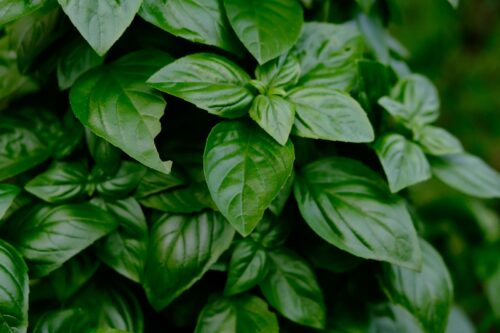
Stimulates The Production Of Flavorful Leaves
- Pruning basil stimulates the plant to focus its energy on leaf production rather than flowering.
- Regular harvest and pruning ensure that the plant has a continuous supply of young and tender leaves, resulting in more flavorful and aromatic basil.
- By removing flower buds and developing seeds, you can prolong the productive lifespan of your basil plants and enjoy a prolonged harvest.
Pruning basil is a vital technique that should be implemented in your herb garden. By promoting bushier growth, improving air circulation, and stimulating leaf production, you can enhance the overall productivity and flavor of your basil plants. Take the time to prune your basil regularly, and you will be rewarded with a thriving and abundant crop.
Tip 1: When To Prune Basil
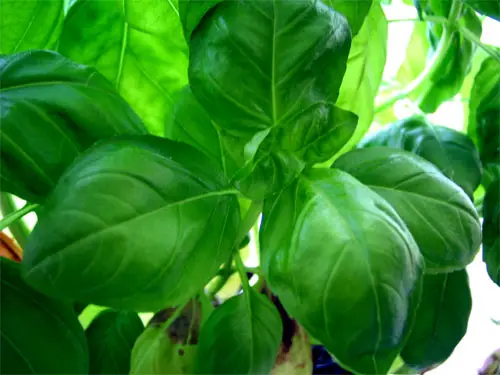
When it comes to pruning basil, timing is crucial. Pruning at the right time can help increase the production of your basil plant. Here are a few key points to keep in mind:
- Prune basil when it has at least 6-8 sets of leaves: Before you start pruning, make sure your basil plant has developed enough foliage. This ensures that the plant is mature enough to handle the pruning process without causing any harm.
- Avoid pruning when the plant is stressed or flowering: Pruning a stressed or flowering basil plant can have negative consequences. It’s important to wait until the plant is healthy and in a vegetative growth stage before you start pruning. This allows the plant to allocate its energy towards new growth and increased production.
Why Prune Basil When It Has At Least 6-8 Sets Of Leaves?
Pruning basil when it has reached 6-8 sets of leaves offers several benefits:
- Encourages bushier growth: Pruning stimulates branching, which leads to a denser and bushier basil plant. This ultimately increases the overall production of leaves.
- Prevents flowering too early: By pruning basil when it has enough foliage, you can discourage premature flowering. When basil flowers, its focus shifts from producing leaves to producing seeds, resulting in reduced leaf growth.
- Enhances flavor and aroma: By removing the top growth, you can maintain the plant’s essential oils concentration, leading to a more intense flavor and fragrance.
When To Avoid Pruning Basil?
It’s crucial to avoid pruning basil under certain circumstances to ensure the plant remains healthy and productive:
- Stressed plants: Pruning a stressed basil plant, such as one experiencing drought or nutrient deficiency, can further weaken the plant. It’s essential to address any underlying issues before pruning.
- Flowering plants: Pruning a basil plant when it’s flowering can disrupt its growth cycle and lead to reduced leaf production. It’s best to wait until after flowering to prune.
- Extremely hot or cold conditions: Extreme weather conditions can stress the plant, making it more susceptible to damage. It’s advisable to hold off on pruning until the temperature stabilizes and the plant recovers.
Remember, timing is everything when it comes to pruning basil. By waiting until your basil has sufficient foliage and avoiding pruning during periods of stress or flowering, you can maximize its production and enjoy a bountiful harvest.
Tip 2: Tools Needed For Pruning Basil
To effectively prune basil, you’ll need a few essential tools and supplies. Here are the key items you should have on hand:
Clean And Sharp Pruning Shears Or Scissors
- Ensure that your shears or scissors are in good condition, with clean and sharp blades. This will help you make clean cuts on the basil plant, promoting healthy growth.
- Regularly clean your tools to prevent the spread of diseases and pests. Use isopropyl alcohol for disinfecting them, which brings us to the next item.
Isopropyl Alcohol For Disinfecting Tools
- Before starting, disinfect your pruning shears or scissors by wiping them with isopropyl alcohol. This will kill any bacteria or fungi that may be present and prevent the transmission of diseases.
- Dip a clean cloth or cotton ball in isopropyl alcohol and thoroughly wipe the blades of your tools. Make sure to cover all surfaces to effectively sterilize them.
By ensuring you have clean and sharp pruning shears or scissors, as well as isopropyl alcohol for disinfection, you’ll be well-equipped for successful basil pruning. These tools will help you make precise cuts and maintain a healthier plant overall. So, gather your supplies and let’s move on to tip 3: appropriate pruning time for basil.
Tip 3: How To Prune Basil Properly
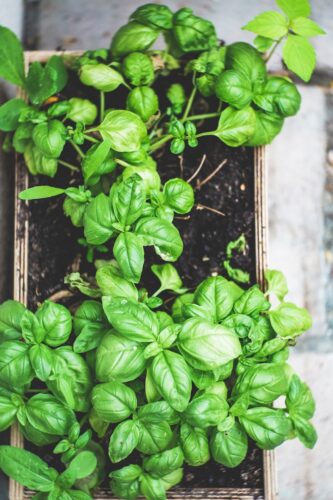
Basil plants benefit greatly from regular pruning, as it helps to stimulate new growth and increase overall production. By pruning basil properly, you can ensure healthier and bushier plants with a higher yield. Here’s a step-by-step guide to top to bottom trimming:
- Identify the top set of leaves:
- Look for the set of leaves at the very top of each stem.
- These leaves are usually the largest and show the most growth.
- Cut just above a node or leaf pair:
- Nodes are the points on the stem where leaves grow.
- Use a sharp pair of pruning shears or scissors to make a clean cut just above a node or leaf pair.
- This ensures that new growth will emerge from that point and the plant will become bushier.
- Repeat the process for each stem:
- Move down the plant, working on each stem individually.
- Make sure to prune the stems evenly to maintain a symmetrical appearance.
- Continue cutting just above nodes or leaf pairs on each stem.
- Dispose of the pruned leaves:
- Collect the pruned leaves and stems and dispose of them properly.
- This will help prevent the spread of disease and pests.
- Regularly check for new growth:
- Pruning encourages the growth of new branches and leaves.
- Keep an eye out for new shoots emerging from the nodes where you made the cuts.
- This is a sign that your basil plant is responding well to pruning.
Remember, regular pruning is essential to keep your basil plants productive throughout the growing season. By following these steps and giving your basil the proper care, you’ll enjoy a bountiful harvest of fresh and flavorful leaves. Happy pruning!
Tip 4: Removing Flower Buds For Continuous Harvest
Pruning basil is essential for maximizing its growth and increasing production. In this blog post section, we’ll focus on tip 4: removing flower buds for continuous harvest. By removing these buds correctly, you can ensure a continuous supply of fresh basil leaves.
Let’s delve into the importance of removing flower buds and learn how to identify and remove them correctly.
The Importance Of Removing Flower Buds
- Flowering is a natural process that signals the end of the plant’s lifecycle. When basil reaches this stage, it puts all its energy into producing seeds rather than growing more leaves.
- Removing flower buds allows the plant to redirect its energy into producing new foliage, resulting in a bushier and more productive basil plant.
- Regularly pruning off flower buds prevents the plant from becoming woody and elongated, ensuring better overall growth and flavor.
How To Identify And Remove Flower Buds Correctly
- Inspect the plant: Regularly check your basil plants to identify any emerging flower buds. These will appear as small clusters of tiny, unopened flowers at the top of the stems.
- Timing is key: Ideally, you should start removing flower buds as soon as they begin to form. This prevents the plant from wasting energy on flower production.
- Use clean tools: Before pruning, make sure your tools are clean to avoid the spread of diseases. Disinfect them by wiping with rubbing alcohol or a 10% bleach solution.
- Pinch or snip: Using your fingers or a clean pair of pruning shears, gently pinch or snip off the flower buds. Ensure clean cuts close to the stem to minimize damage.
- Follow the top to bottom trimming method: While removing flower buds, follow the top to bottom trimming technique. Start by removing the topmost buds first, gradually working your way down the plant. This creates an even and aesthetically pleasing shape.
Remember, continuous removal of flower buds is crucial for an extended basil harvest. Be attentive to any new buds that appear and promptly remove them to maintain basil’s productivity.
By carefully removing flower buds, you’ll ensure a thriving basil plant that provides an abundance of aromatic leaves for your culinary adventures. So, let’s save those budding flowers for another time, and let our basil plants reach their full potential!
Tip 5: Proper Aftercare For Pruned Basil
After pruning your basil plants, it’s crucial to provide them with the proper aftercare to ensure healthy regrowth and increased production. Here are some essential tips for watering and fertilizing basil after pruning, as well as mulching and protecting the plants from extreme weather.
Watering And Fertilizing Basil After Pruning
- Keep the soil consistently moist: Basil plants require moist soil to thrive, so make sure to water them regularly. However, avoid excessive watering, as it can lead to root rot.
- Water deeply: When watering basil after pruning, ensure that the water penetrates the soil deeply to encourage strong root growth. This will help the plant recover more quickly.
- Apply organic fertilizer: After pruning basil, it’s essential to provide the plants with the nutrients they need. Use an organic fertilizer rich in nitrogen to promote healthy leaf growth.
- Avoid over-fertilizing: While it’s necessary to fertilize basil after pruning, be mindful not to overdo it. Too much fertilizer can lead to excessive foliage growth but can hinder the production of flavorful leaves.
Mulching And Protecting The Plants From Extreme Weather
- Apply organic mulch: Mulching around the basil plants after pruning helps to retain moisture in the soil and prevent weed growth. Use organic materials like straw, wood chips, or compost to provide a natural and nutrient-rich mulch layer.
- Protect from extreme weather: Basil is sensitive to both extreme heat and cold temperatures. Consider using shade cloth during hot summer days and covering the plants with a frost cloth during chilly nights, especially when they are newly pruned.
- Prevent pests and diseases: After pruning basil, it’s essential to protect the plants from common pests and diseases. Regularly inspect the plants for any signs of infestation and take appropriate measures to prevent further damage.
Remember, proper aftercare is essential for the overall health and productivity of pruned basil plants. By following these tips for watering, fertilizing, mulching, and protecting the plants from extreme weather, you can ensure a bountiful harvest of flavorful basil leaves.
Happy pruning and growing!
Faqs About Pruning Basil
Pruning basil is an essential practice to ensure healthy growth and increase overall production. By trimming your basil plant, you can encourage new growth, prevent it from becoming leggy, and enhance flavor. However, if you’re new to basil pruning, you may have some questions regarding the process.
In this section, we’ll answer a few frequently asked questions about pruning basil.
Do I cut Basil from top or bottom?
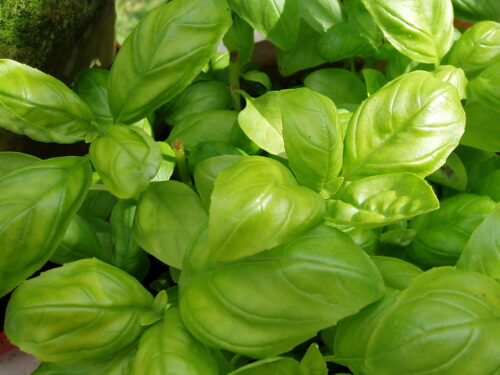
Pruning basil is a crucial technique that can significantly enhance the productivity and overall health of your basil plants. The choice between top pruning and bottom pruning depends on your goals and the growth stage of the plant. Both methods can be effective, and understanding their advantages will help you make an informed decision to maximize your basil’s potential.
- Top Pruning: Top pruning, also known as pinching, involves cutting the upper portion of the basil plant just above a set of leaves or a leaf node. This technique is commonly used to encourage branching and create a bushier appearance. By removing the top growth, the plant’s energy is directed towards the lower branches, stimulating lateral growth and leading to increased leaf production.
Advantages of Top Pruning:
a. Bushier Growth: Top pruning promotes branching, resulting in a fuller and more compact plant. This is particularly beneficial for container-grown basil or when growing indoors, as it creates an attractive and lush plant.
b. Increased Leaf Production: More branches mean more growing tips, leading to higher leaf yield and providing an abundance of fresh basil leaves for culinary use.
c. Delaying Flowering: Regular top pruning can help delay the basil plant’s flowering process. By removing the top growth, the plant focuses on leaf production rather than flowering, extending the harvest period.
- Bottom Pruning: Bottom pruning involves removing older and larger leaves from the lower portion of the basil plant. This method is primarily used for harvesting and to encourage new growth from the top of the plant.
Advantages of Bottom Pruning:
a. Harvesting Leaves: Bottom pruning is an efficient way to harvest basil leaves for immediate use. Cutting the larger leaves from the lower part of the plant allows for a steady supply of fresh basil leaves.
b. Stimulating New Growth: Removing older leaves prompts the plant to produce new foliage, ensuring a continuous cycle of pruning and growth.
c. Managing Plant Size: Bottom pruning helps control the overall size of the basil plant. By selectively removing leaves, the plant can redirect its energy for top growth, resulting in a more compact size.
Timing is Key: Timing is essential for successful pruning. Start pruning when the basil plant reaches a reasonable height, around 6 to 8 inches tall. This allows the plant to establish healthy growth before pruning. Avoid over-pruning, as it may stress the plant and hinder its growth.
Pruning Tips: Use clean and sharp pruning tools, such as shears or scissors, to prevent disease transmission or damage. Sterilize your tools before each use.
When top pruning, make clean cuts just above a set of leaves or a leaf node to encourage lateral growth and branching.
When bottom pruning, selectively remove larger leaves from the lower part of the plant, leaving some leaves near the top to support photosynthesis and growth.
Observation and Adaptation: Each basil plant is unique, so observe how your plant responds to pruning and adapt your techniques accordingly. Pay attention to signs of stress or slow growth and adjust your pruning routine as needed.
How do you trim basil so it keeps growing?
Trimming basil is essential for maintaining a healthy plant and encouraging continuous growth. Here are some steps to properly trim basil to ensure its vitality:
Pinch or trim the tops: Once your basil plant reaches a height of about 6 inches (15 cm) or more, start by pinching or trimming the tops of the stems just above a set of leaves. Using clean and sharp scissors or gardening shears, make clean cuts. This practice will promote branching and a bushier appearance.
Avoid excessive cutting: When trimming basil, refrain from cutting more than one-third of the plant at a time. Excessive pruning can stress the plant and hinder its growth. Opt for regular, light pruning instead of occasional heavy pruning.
Remove flower buds: If your basil plant starts to produce flower buds, promptly pinch them off. Flowering signals the end of the plant’s life cycle, and once basil flowers, its leaves may become bitter, and the plant might stop producing new growth.
Harvest frequently: Regularly harvesting the leaves encourages the continuous growth of basil. Once the plant has several sets of healthy leaves, you can start harvesting the larger leaves from the outer parts while leaving the smaller, inner leaves to continue growing.
Promote branching: Encourage branching and a fuller plant by pinching or trimming just above a leaf node (the point where a leaf grows from the stem). This action will stimulate the development of two new stems from that point, enhancing the overall volume of the basil plant.
Proper care: Basil thrives with sufficient sunlight (at least 6 hours of direct sunlight per day) and appropriate watering. Ensure the soil remains consistently moist but not waterlogged. Water the plant when the top inch of the soil feels dry to the touch.
Limited fertilization: Basil does not require heavy fertilization. A balanced liquid fertilizer applied every 4-6 weeks during the growing season is sufficient. However, avoid over-fertilization, as it may result in excessive foliage growth with weakened flavors.
When should basil be pruned?
Pruning basil is an ongoing process that can take place throughout its growing season, which typically spans from spring to early fall, depending on the climate. To maintain a healthy and productive basil plant, consider the following guidelines for pruning:
Early Pruning: Once your basil plant has grown to a height of approximately 6 inches (15 cm) and has developed several sets of leaves, you can begin pruning. Pinch or trim the tops of the stems just above a set of leaves. This early pruning encourages the plant to branch out and grow bushier.
Regular Maintenance: Consistent pruning is essential for basil. Regularly check your plant for any signs of flowering buds and promptly remove them. Pinching off the flower buds helps prevent the plant from going to seed and stimulates more leaf growth.
Harvesting: Harvesting basil leaves for culinary use is a form of pruning. As the plant matures and produces several healthy sets of leaves, you can start harvesting the larger leaves from the outer parts of the plant. Be sure to leave the smaller, inner leaves to continue growing.
Ongoing Pruning: Continue to prune your basil plant throughout its growing season. This practice not only ensures a steady supply of fresh leaves but also helps the plant maintain its compact and bushy shape.
Late Season Pruning: Towards the end of the growing season, when temperatures begin to drop and the basil plant’s productivity wanes, you can perform a more substantial pruning to harvest as much of the remaining foliage as possible. This will allow you to make the most of the plant’s yield before it goes dormant or dies off.
How much should I prune my basil?
A general guideline on how much you should prune it is not more than one-third of the basil plant at a time. Pruning more than this can lead to undue stress and slow down its growth. Here are specific guidelines for how much you should prune your basil:
Early Pruning: Once your basil plant reaches a height of approximately 6 inches (15 cm) and has developed several sets of leaves, you can begin early pruning. Pinch or trim the tops of the stems just above a set of leaves. This practice stimulates the plant to branch out and become bushier.
Regular Maintenance: Throughout the growing season, maintain a routine of regular pruning. Look for any flowering buds and promptly remove them to prevent the plant from going to seed. Additionally, harvesting the larger leaves from the outer parts of the plant is a form of pruning.
Avoid Over-Pruning: As mentioned earlier, be cautious not to remove more than one-third of the plant at any given time. Instead, opt for light pruning regularly to preserve the plant’s health and vigor.
Observe Plant Response: Monitor how your basil plant reacts to pruning. If it responds by becoming bushier and producing new growth after each pruning session, you’re likely pruning it appropriately. Should the plant show signs of stress or wilting, you may have pruned too much at once.
Customize Pruning Approach: The amount of pruning required can vary depending on the size and growth rate of your basil plant. Larger, more robust plants may benefit from more frequent pruning, while smaller ones or those growing in containers may require less frequent pruning.
Can I Prune My Basil More Than Once?
Yes, pruning can be done multiple times throughout the growing season. Regularly trimming your basil plant not only promotes bushy growth but also prevents it from bolting, which is when the plant starts to flower and focuses less on producing leaves.
For optimal results, prune the plant every 2-4 weeks during the growing season to keep it compact and productive.
What Should I Do With The Pruned Basil Leaves?
After pruning your basil, you may be wondering what to do with the excess leaves. Here are a few options:
- Use them immediately: Pruned basil leaves are perfect for immediate use in recipes such as pesto, salads, pasta dishes, or as a flavorful garnish. Harvesting and utilizing the fresh leaves right away ensures maximum flavor and nutrient content.
- Dry the leaves: If you have an abundance of pruned basil leaves, consider drying them for future use. Lay the leaves in a single layer on a tray or hang them upside down in a well-ventilated area. Once completely dry, crumble the leaves into smaller pieces and store them in an airtight container.
- Freeze for later: Another option is to freeze the pruned basil leaves. Blanch the leaves quickly in boiling water and then transfer them to an ice bath to cool. Pat them dry and freeze them in airtight containers or ice cube trays. This way, you can easily add basil to your dishes throughout the year.
Can I Use The Pruned Stems For Propagation?
Yes, basil stems that are pruned can be used for propagation. Here’s how you can do it:
- Select healthy stems: Look for sturdy stems with no signs of diseases or pests. Choose stems that are approximately 4-6 inches in length.
- Remove lower leaves: Strip the bottom leaves from the stem, leaving a 2-inch bare section.
- Place in water: Fill a glass jar or a small container with water and submerge the stripped end of the stem. Ensure that only the bare section is submerged.
- Watch for root growth: Place the jar in a sunny spot and change the water every few days. Soon, you’ll notice roots starting to develop from the bare section.
- Transplant into soil: Once the roots are about 1 inch long, carefully transplant the stem into a small pot filled with moist potting soil. Keep the soil consistently moist and provide adequate sunlight.
With these simple steps, you can propagate new basil plants from the pruned stems, allowing you to expand your basil garden without the need to purchase additional plants.
Remember, pruning basil regularly is crucial to maintain a healthy and productive plant. By understanding how often to prune, what to do with the pruned leaves, and how to propagate from pruned stems, you can maximize your basil yield and enjoy the fresh, aromatic flavors in your culinary creations.
Frequently Asked Questions For How To Prune Basil – 5 Tips To Increase Production (Top To Bottom Trimming)
How Do You Prune Basil To Increase Production?
Pruning basil to increase production involves top to bottom trimming. By cutting off the top portion of the plant, you encourage lateral growth, resulting in a bushier plant. Regular pruning also prevents flowering, allowing the plant to focus on producing more leaves.
When Is The Best Time To Prune Basil?
The best time to prune basil is when the plant has reached a height of around 6 inches and has developed at least 6 leaves. This typically occurs about 4-6 weeks after planting. Pruning at this stage promotes healthy growth and ensures a bountiful harvest.
Should I Prune The Flowers Off My Basil Plant?
Yes, it is recommended to prune the flowers off your basil plant. Once the plant starts flowering, it shifts its energy from producing leaves to developing seeds. By removing the flowers, you redirect the plant’s energy back to leaf production, resulting in a more prolific basil plant.
Conclusion
Pruning basil is a simple yet effective technique to increase its production. By following these five tips, you can ensure that your basil plants thrive and yield abundant harvests. Firstly, start from the top and work your way down, trimming off the top leaves to promote branching and encourage more growth.
Secondly, remove any yellowing or damaged leaves regularly to maintain the plant’s overall health. Thirdly, pinch off the flower buds as soon as they appear to prevent the plant from diverting energy towards seed production. Fourthly, remember to cut the basil near a leaf joint to promote new growth.
Lastly, be sure to prune regularly throughout the growing season to keep your basil plants compact and productive. By implementing these pruning techniques, you can enjoy an abundance of fresh basil and enhance the flavors in your culinary endeavors. Start pruning and watch your basil flourish!
Related posts:
How to Prune Basil for Winter: Indoor Preserve It & Survival Care
